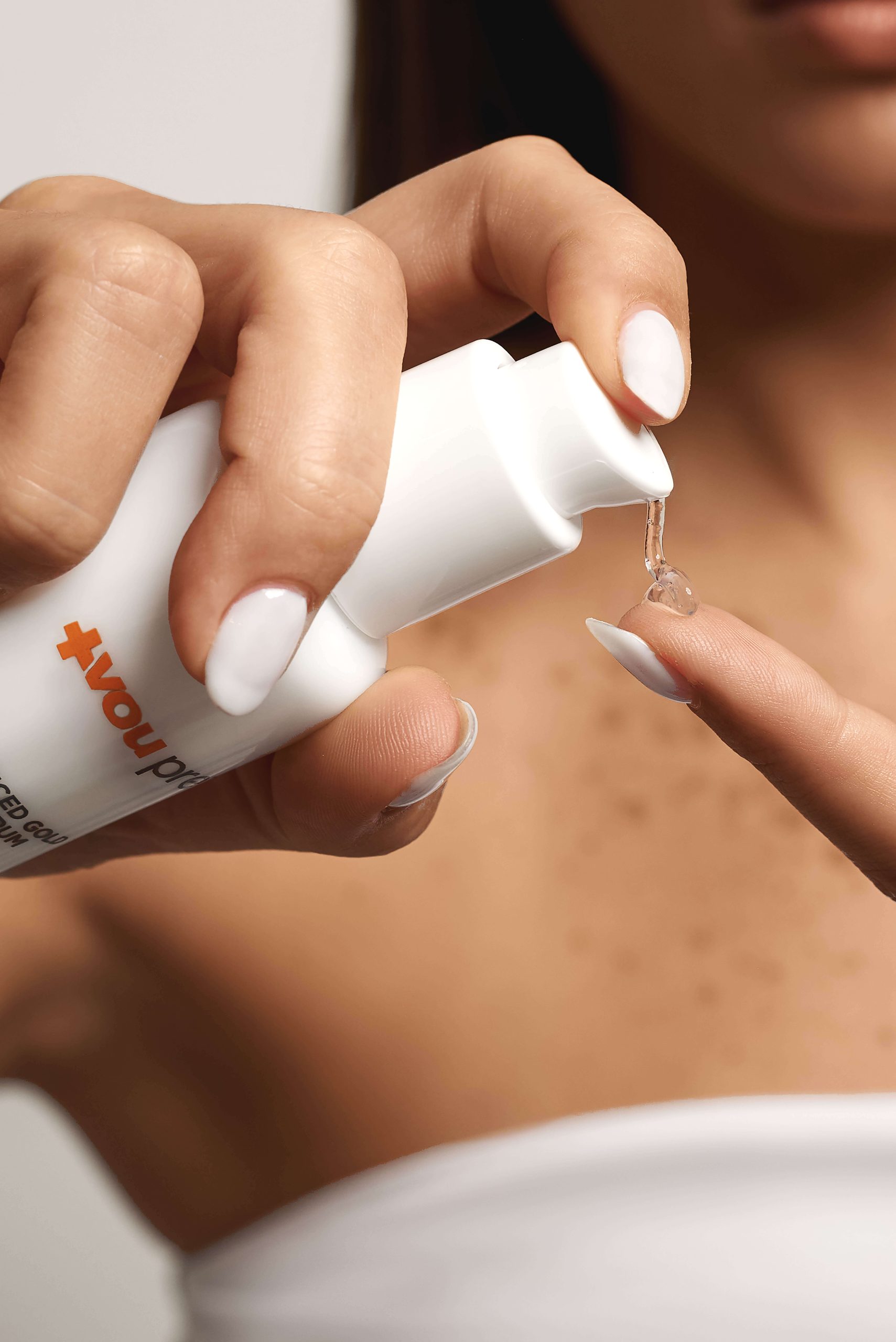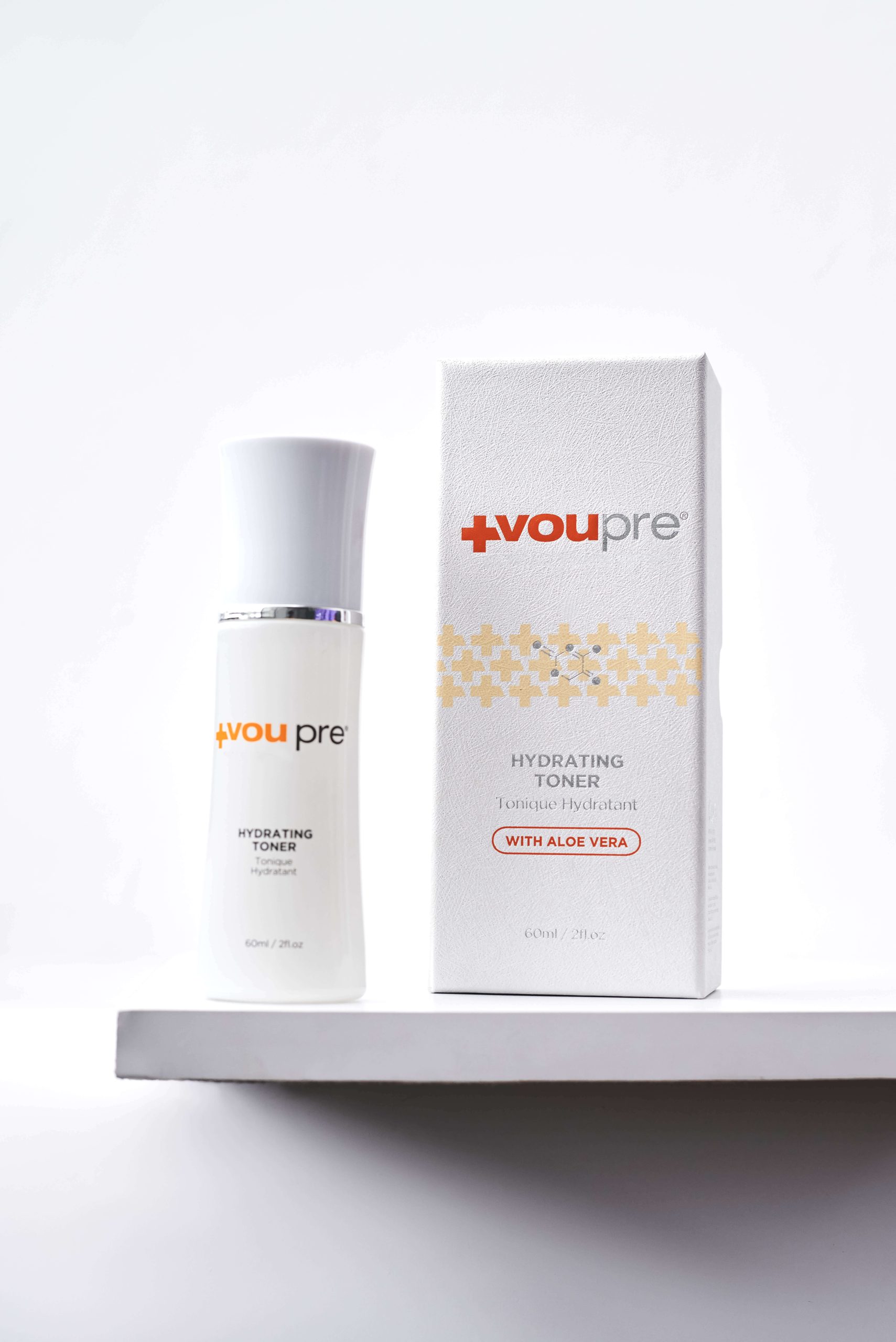Published:
Have you ever bought a new skincare product purely because it contains a trending ingredient or your favorite TikTok influencer has recommended it, only to find that it doesn’t work well on your skin? This is surprisingly common. It’s so easy to fall for hyped-up products and clever marketing, only to find that the product you actually end up applying to your skin is very different from what you thought it would be.
The only way to really know what a skincare product is going to be like and how well it’s going to work for your skin is to read the label that comes with it. Sadly, this can often be easier said than done! Many skincare labels can seem downright confusing, so much so that people sometimes simply avoid looking at them too closely and instead just hope for the best. As you can imagine, this doesn’t result in a very effective skincare routine.
The good news? VouPre is here to help! Today, we’re going to teach you exactly how to decode skincare labels, so that when shopping for skincare in the future, you can make the very best choices for your skin.
Get Familiar With the INCI System

Let’s start with the ingredient list, which is arguably one of the most important parts of skincare labels. This, however, is where many people immediately zone out. Take one look at that list of complex names, some of which may seem impossible to even pronounce, and it’s easy to feel overwhelmed.
However, that complexity is there for a reason. It’s known as the INCI system, a method that’s used all over the world for naming skincare ingredients. It ensures consistency and accuracy, and also makes it easier to compare different products.
Let’s use vitamin C as an example. We all know that it’s a superstar skincare ingredient – one of the most popular around! However, there are various forms of vitamin C available, and it’s important to differentiate between them. Ascorbic acid, which is used in the VouPre Advanced Gold Eye Serum, is known for being the most potent. It’s great for producing fast visible results, but it could end up irritating very sensitive skin. Tetraxhexyldecyl ascorbate, on the other hand, which is used in the VouPre Vita C Serum, is a gentler derivative that’s usually tolerated well by all skin types.
There’s no denying that it can take a while to learn some of the official names for various ingredients. However, there’s plenty of help out there. From INCI dictionaries to your favorite search engine, a little research will tell you so much about a mysterious-sounding ingredient.
What about if an ingredient list isn’t written in accordance with the INCI system? This is a huge red flag. It means that the brand isn’t following FDA guidelines, indicating that you can’t trust the product.
Pay Attention to Ingredient Order

The INCI system also dictates that an ingredient list should display ingredients in order of concentration. Although this doesn’t tell you the specifics of how much of each ingredient has been used, it gives you a very good idea as to which ingredients have been used in abundance, as well as which haven’t.
The top five to ten ingredients are what you should focus on first. After all, these make up the bulk of the product you’re considering. If the product is water-based, water (or aqua) will usually be first on the list. Glycerin is also a popular base (while being an incredible hydrating ingredient as well) and is often used alongside water. After this, the next few ingredients will tell you so much about how that product works.
Take the VouPre Hydrating Toner as an example. While the name of the product tells you that it’s going to be hydrating, don’t automatically believe this to be true. Take a look at the first 5-10 ingredients on the label and make sure that there are hydrating ingredients featured there, like the aloe vera leaf juice and cucumber fruit extract in the toner.
Once you’ve scanned the first few ingredients on an ingredient list, don’t stop there. It’s important that you read through the entire list. Some ingredients, such as essential oils, can only be used in small concentrations. They’re usually found at the end of an ingredient list, yet still have a big impact on the formulas they’re used in. The same applies to certain antioxidants and acids. Even when used in small concentrations, they can still significantly affect your skin.
Focus on Content Rather Than Length
A few years ago, there was a movement toward shunning skincare products that had long ingredient lists, in favor of those with shorter ingredient lists. Why? Because the fewer ingredients you apply to your skin, the lower your chances of experiencing irritation or sensitivities from the products you use.
While this is very true, avoiding products with long ingredient lists solely for this reason can often be a big mistake. When it comes to skincare, quality is always more important than quantity. Yes, shorter ingredient lists can help to protect your skin from extra irritants. However, you could also end up excluding beneficial ingredients from your skincare routine.
When it comes down to it, don’t place too much focus on the length of the ingredient lists on skincare labels. Instead, pay attention to the content of those lists. Look for high-quality ingredients that are capable of meeting your skin’s needs.
Don’t Be Fooled By Unregulated Claims
As we mentioned earlier, clever marketing is often enough to persuade a person to buy a new skincare product. Consumers often believe the claims that they see on skincare labels, not realizing that many of those claims are unregulated. This means that they could very well be false claims.
Let’s take a closer look at some of the commonly used claims that don’t have any legal standing behind them:
- Hypoallergenic – this indicates that a product is unlikely to cause allergies. However, it’s not a legally binding term, making it meaningless.
- Non-comedogenic – this means that a product isn’t going to clog your pores. It’s a claim that people with oily skin often look out for. However, without any regulation behind this term, a product containing a multitude of pore-clogging ingredients could still claim to be non-comedogenic. This is why it’s so important to take a look at the ingredient list yourself to make sure that there aren’t any pore-clogging compounds on there.
- Natural – this isn’t a standardized term whatsoever. A product that primarily contains synthetic chemicals could still claim to be natural.
- Cosmeceutical – this term, which combines the words ‘cosmetic’ and ‘pharmaceutical’, makes it seem as though a product is higher quality. This, however, isn’t true at all. Cosmeceutical-grade ingredients don’t exist – this is simply more clever marketing terminology!
Seeing the above claims on skincare labels can give you a false sense of security. Unfortunately, until more regulations are brought into the skincare industry, you’ll need to rely on the ingredient list (along with plenty of research) to find out whether or not any unregulated claims that you see on skincare labels are actually true.
Learn What the Symbols Mean
In addition to various claims, skincare labels are usually also dotted with a number of different symbols. Again, this can make those labels seem overwhelming – it’s not always obvious what those symbols mean!
Here are some of the symbols that you’re most likely to see on skincare labels, along with what they mean:
- A leaping bunny – this is an international symbol that tells you that a product hasn’t been tested on animals.
- The vegan society symbol – the same as above, this shows that a product doesn’t contain any animal products. It also indicates that the product is cruelty-free.
- A symbol of a jar with a number next to it (PAO is sometimes written on the jar too) – this stands for ‘period after opening’. It’s essentially an expiration date. It tells you how long the product’s shelf life is after it has been opened. The number that you see will be accompanied by an ‘M’, which stands for months. So, an open jar symbol showing PAO 12M means that a product will be good for 12 months after it has been opened.
- UVA – this depicts that a product contains at least the minimum amount of UVA protection needed to be classed as a sunscreen.
- A green dot – this means that 95% of that product has been made from plant-based ingredients. It’s also often a sign that the brand is dedicated to sustainability.
Grams vs Milliliters
Another symbol that you may notice on skincare labels is a simple ‘e’. This tells you that the average fill method has been used for the product. The ‘e’ is followed by a number, which is then usually followed by either a ‘g’ or an ‘ml’. It essentially measures the amount of product that’s in a container.
Why does this matter? Although it’s a symbol that most people ignore, it can really clue you in to the consistency of the product in question. If a product is measured in grams, then this is a sign that it has quite a solid consistency, like a cream. On the other hand, if it’s measured in milliliters or fluid ounces, this means that it has more of a liquid consistency.
This can be particularly helpful when purchasing serums. Some are much thicker than others. Checking out how the product has been measured will tell you just how watery that formula actually is.
Decoding Skincare Labels With VouPre
If you’re new to skincare, trying to decode skincare labels can seem like a minefield at first. Even pros struggle with it at times! However, break things down into the various sections that we’ve discussed above, and everything will suddenly start to make so much more sense. Spend some time fully reading and understanding the labels of the products that you use, and you’ll be able to make better-informed decisions for your skin.
Click here to shop for more skincare bestsellers from VouPre.







